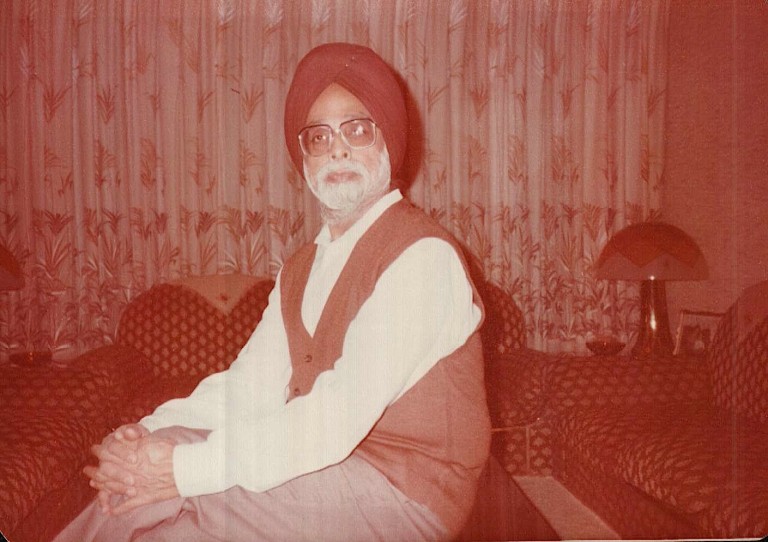
by Rachna Hukmani – Follow @whiskeystories
This post was originally posted on Rachna’s blog and republished with permission.
I know it’s the month of May, but I want to take a moment to reflect on December, a month that has become bittersweet for me in these past 3.5 years. On one hand, my dad’s passing has brought me closer to my family and their acceptance that I will always do things a little “differently” from them—or as my mom puts it, “I accept you as the American in the family.” On the other hand, there is guilt of not having appreciated moments that are now like magical gifts. Life’s embarrassing moments make for comedic relief in the future. So in December 2016, I thought of starting the new year with with acceptance and comedy.
So how’s this for a hilarious memory?: I still remember how cool I felt the day I was getting ready for my first job interview in Cyprus. 21, thinking I knew everything, I randomly applied to the first company I found on the internet that had a vacancy, offered health benefits, and promises of travel. I put on the only grown up black blazer I owned and practiced my first professional handshake in front of the mirror. This was going to be great.
I should have known something was up when I saw my dad also getting ready and casually announcing that he would drive me to my interview. Anyone who knew him, knew there was nothing casual about him.
Feeling optimistic, I agreed. So off we went. He was extremely quiet on the drive which was also unlike him. Usually, there would be a lecture on the value of the Lira (Cyprus currency) and to ensure I didn’t tarnish the Hukmani name in any way.
As we approached our destination, my heart skipped a beat. This was an interview I had landed on my own and I was going to get it. I didn’t really care about much else. Just then, he announced, “I am coming upstairs with you. God knows where you found these people. I have to make sure they don’t demoralize you in anyway.”
I was dumbstruck.
My mind started to race. “Demoralize me? What does that even mean?” I thought to myself. Thoughts of bailing started to rush through my mind.
[Read Related: ‘Because Dad Said So’: A Life-Changing Affirmation]
But the need to prove to myself that I could do this, prevailed. So, in we went. Together. For my interview. Dad in tow. Like my bodyguard. And he sat right outside the conference room staring sternly at everyone while I tried to convince them that I was independent, strong, and could travel by myself if needed.
The interesting part was that no one said anything. Not even a single comment. Everyone acted normal like all women bring their dads to their interviews. Maybe they thought I was the beloved daughter of an Indian mobster.
The Indian mafia must be why I got that job that day. That, and my solid handshake. And the silver lining? I made friends immediately. On my first day, my friend Tonia came up to me, introduced herself and asked me seriously, “So, why did your dad come to your interview? Are you a baby?”
There is nothing like addressing things head on to know you’re going to be ok. That job lasted 4 years and this incident was a source of laughs on many occasions. You’re welcome, random company I found on the internet.
In turn, over the years, my dad loved bragging to everyone about how he found me my first job with a renowned company he located after careful research. Sure, let’s go with that. After a while, I also realized he came with me because he was terrified I didn’t need him anymore.
I will always need you, Dad. Thank you for the comedy.
 Rachna Hukmani lives in NYC and is very passionate about writing about her Greek/Indian upbringing. Youngest child of 5 siblings, she has a lot of witty anecdotes to share and loves storytelling. In fact, she is the owner/founder of Whiskey Stories. Having worked in the whiskey industry for several years, she is well-versed in the art of whiskey making, barrel aging, and mixology. Whiskey Stories is more than a whiskey tasting class. It is a sensorial immersive experience that combines her passion for storytelling as well as pairing obscure whiskies with other artists talents ranging anywhere from authors & musicians to actors & comedians. It is unlike any other whiskey class in NYC! (Bio Photo Credit: © Katarina Kojic Photography)
Rachna Hukmani lives in NYC and is very passionate about writing about her Greek/Indian upbringing. Youngest child of 5 siblings, she has a lot of witty anecdotes to share and loves storytelling. In fact, she is the owner/founder of Whiskey Stories. Having worked in the whiskey industry for several years, she is well-versed in the art of whiskey making, barrel aging, and mixology. Whiskey Stories is more than a whiskey tasting class. It is a sensorial immersive experience that combines her passion for storytelling as well as pairing obscure whiskies with other artists talents ranging anywhere from authors & musicians to actors & comedians. It is unlike any other whiskey class in NYC! (Bio Photo Credit: © Katarina Kojic Photography)




